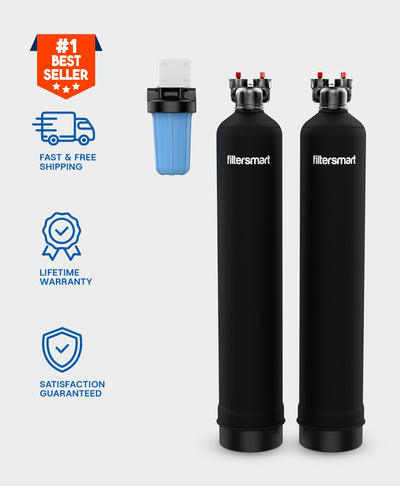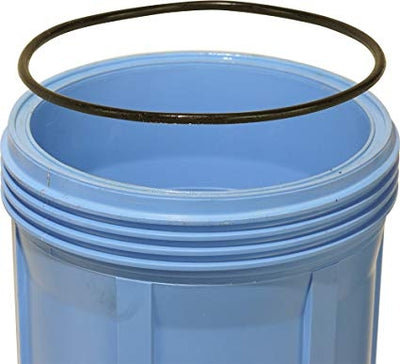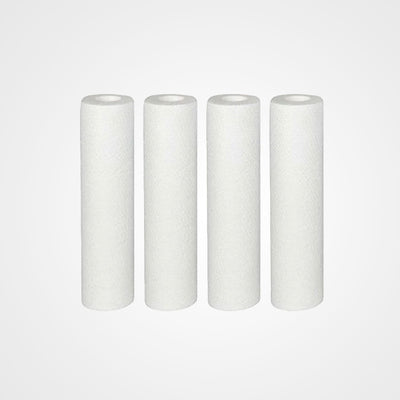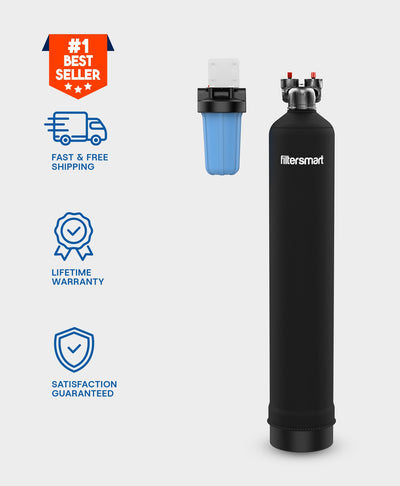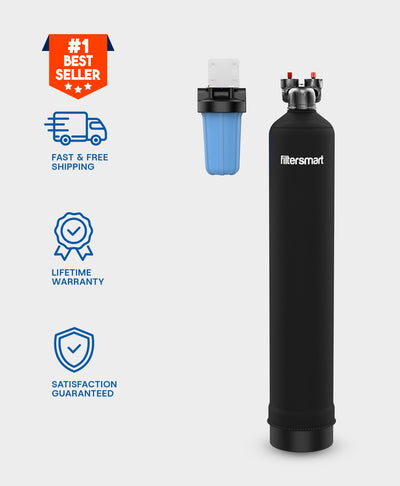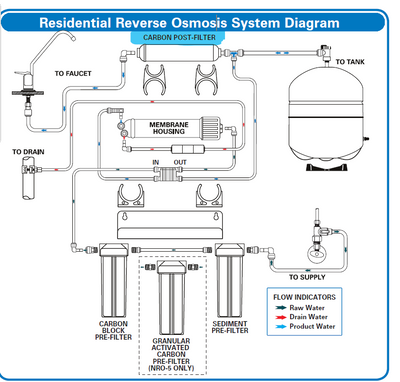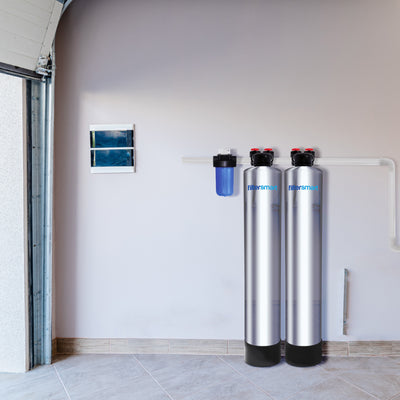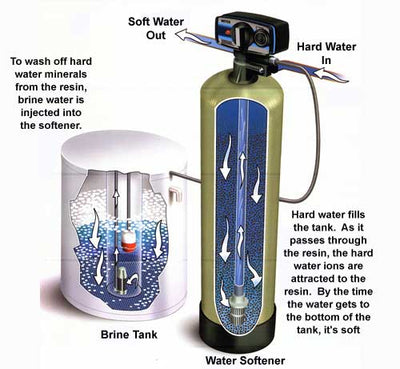So what is a potassium chloride water softener?
Is it any different from a sodium chloride (or salt-based) water softener? How does it work? How expensive is it? Are there any other alternatives?
In this article, we’ll give you a quick and comprehensive guide to potassium chloride water softeners. There’s a lot of misinformation on the internet -- and that’s even true in the water softening industry. We want to make this article as easy to understand as possible. That way you can make an informed decision about which type of water softener is best for you.
How Does a Potassium Chloride Water Softener Work?
Potassium chloride water softeners are pretty much the exact same as salt-based water softeners. They both work through the process of ion exchange.
In short, magnesium and calcium, the two minerals that make up hard water, are positively charged. A potassium chloride water softener runs hard water, full of positively charged magnesium and calcium, through a mineral tank that contains negatively charged resin beads. When a positively charged ion comes in contact with a negatively charged ion, they bind. Thus, the resulting water doesn’t have any magnesium and calcium in it.
This is, of course, the exact same as salt-based water softeners, but there's one big difference. Potassium chloride water softeners use potassium chloride instead of sodium chloride to regenerate the resin beads.
Potassium Chloride Water Softener Side Effects
Well, if you use potassium chloride over sodium chloride, the end result -- the water that you end up drinking and using everyday -- contains potassium instead of sodium.
The American Heart Association has plenty of articles about thedangers of increased sodium intake. We’ve written in the past about how a water hardness level of 10 grains per gallon, which isfairly average across large sections of the continental United States, the result is about300mg of sodium intake per day, or a medium McDonald’s French Fry.
But, if you use potassium instead of sodium, you’ll just end up consuming extra potassium, which, when consumed in excess, isnowhere near as dangerous as consuming sodium.
Is it as Effective as Using Salt?
In 1993,Dr. Kim Polizotto and Dr. Charles Harms published a review inBetter Crops about the efficacy and benefits of using potassium chloride instead of sodium chloride. They not only concluded that potassium chloride water softening was just as effective as sodium chloride water softening, but they also added, “Na [sodium] really has no redeeming value in the environment outside of saltwater or brackish water ecosystems. If alternatives to NaCl for water treatment can be developed, they should be used. Potassium chloride is a logical choice to reduce Na discharge from water softening systems, to provide additional K [potassium] in human diets and to serve as a nutrient source for plants.”
Potassium Chloride vs Sodium Chloride
So, if you can quickly and easily turn your current water softener into a potassium chloride water softener just by changing the salt you use to regenerate the resin, why would anyone choose to use or consume sodium instead of potassium?
Simple: It’s cheaper.
Right now, as of February 2020, if you were to look on Amazon for both potassium chloride and sodium chloride, you’d likely find this 40lbbag of potassium chloride from Cargill Salt for ~$45. The same sizebag of salt from Morton costs roughly half--or a little bit over--at ~$24.
That’s a difference of $21, which quickly adds up if you refill your tank regularly.
The average family of four will use about 10lbs of salt per week for their ion exchange water softener (which we think is a bit of a waste, considering thealternatives to ion exchange). That means, in one year, you’re going to be buying 13 40lb bags.
For the sodium chloride water softener, you’re going to spend $312 in maintenance.
For the potassium chloride water softener, you’re going to spend $585 in maintenance.
On the saltalone. That’s not to mention the fact that you have to replace the resin and the pre-filter on occasion, nor is it accounting for the electricity in regeneration or the lost water.

Alternatives to Potassium Chloride Water Softeners
If you’re a consumer interested in using potassium chloride instead of sodium chloride, it’s probably because you’re 1) worried about your sodium intake (and/or you have related high-blood pressure issues) and 2) you’re worried about the environment; you don’t want to dump a bunch of salt-loaded wastewater into nearby soil to deal with annoying hard water.
However, you’re probably also a little hesitant about the costs. If you have a family of four, as we saw above, you’re probably going to spend almost $300 a yearmore than if you were just to use sodium chloride instead.
Luckily, there are other options on the market.
Take, for example, template-assisted crystallization water softeners. According to an independent third-party study performed by Arizona State University, TAC water softeners performed just as well -- if not better -- than ion exchange at reducing limescale build-up. If you want a lengthy explanation of howTAC works, just click here.
For now, though, let’s review how it would affect you as a consumer. For one, TAC doesn’t work through ion exchange. That means you don’t have to replace and refill the mineral tank, lowering both maintenance and maintenance costs.
Instead of spending $312 a year on salt, you have to spend $0 a year on salt. The only thing you’ll have to replace regularly is the block of activated carbon, which will probably cost you anywhere from $100-200 a year -- depending on how much water you need filtered.
Check out FilterSmart’s line oftemplate-assisted crystallization water softeners here.
Read More>> Salt vs salt free water softeners
Switching From Salt to Potassium In Water Softeners
Potassium chloride water softeners are the same as sodium chloride water softeners. They both work through the process of ion exchange. That means they both require a separate discharge line, high maintenance, and an electricity source for installation. Since there are more demands, there are invariably higher installation costs.
If you opt to use potassium chloride instead of sodium chloride, keep in mind that it will probably cost you an extra $200-300 per year. However, it’s a better alternative than sodium chloride. Instead of drinking extra sodium, you’ll be drinking extra potassium. Plus, potassium is even good for plants.
There are, however, cheap and effective alternatives to ion exchange water softeners. Stay informed so that you can make the best decision possible.
Questions? Concerns? Feel free to get in touch:
Call us: 866.455.9989
Email us: sales@filtersmart.com








